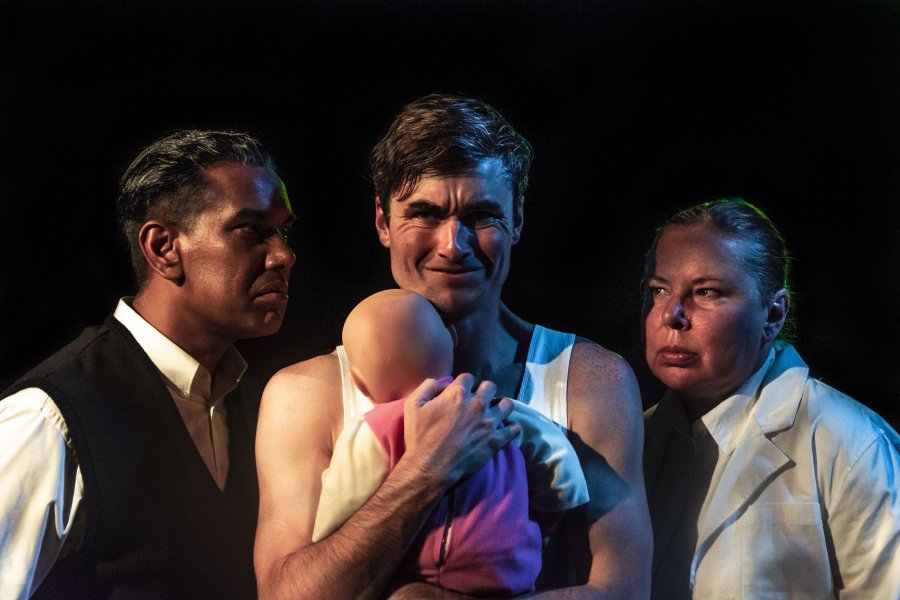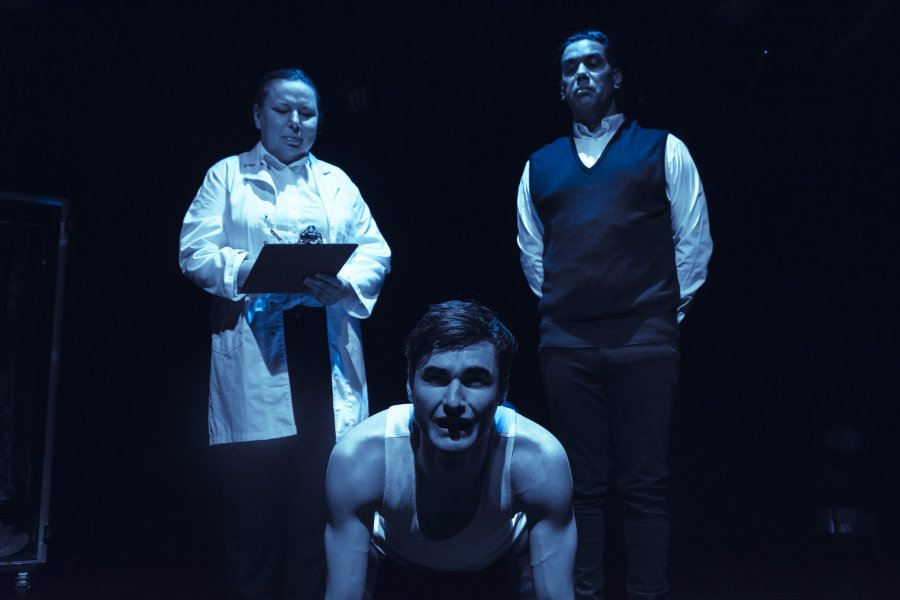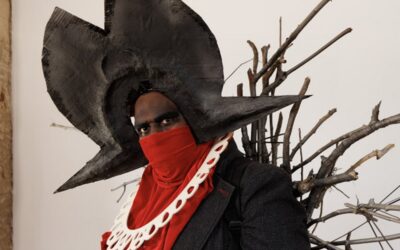By Anna Hayes
Cracked Actors Theatre strives towards supporting new Australian writing and its new offering, James May’s In The Ghetto is a perfect fit for this year’s Midsumma Festival.
The winner of last year’s 50 Years: Queers & Pioneers competition, In The Ghetto tells the tumultuous story of Jet (Andrew Vagg) and Quiver (Richard James Pengelly) as they navigate the ‘Gay Ghetto’ of Prahran in the noughties.
It’s a difficult play to sum up because, in a sense, the ending is ambiguous. Jet and Quiver’s relationship is a chaotic whirlwind where one character talks about everything (but nothing), and the other feels stymied by his feelings and identity issues. Do they survive and stay together? I think that depends on whether you’re an optimist or a pessimist…
The play opens with Jet, donning a kimono and blonde wig, a la Julia Roberts in Pretty Women and talking lovingly to a baby doll in a cot – although we see a therapy scene later in the play, it feels like Jet’s most honest confessions are made to ‘Zaza’, she is a touchstone for him and a depiction of the future he desires.
Quiver stumbles into the scene, worse for wear, and carting a trolley full of electrical goods in varying stages of functionality. As a counterpoint to Jet’s despondency, Quiver brings the chaos – drugs, dubious colleagues, and all the promises of an addict trying to keep the peace.
Vagg is suitably brooding as Jet, a man struggling with his identity and looking for meaning in an imagined reality. Pengelly swaggers around the stage, a pure larrikin, but we do see a more vulnerable side particularly in his job interview scene.
The two actors bounce off each other nicely – there’s chemistry that sizzles particularly in the early scenes but, as the play goes on, it starts to become a struggle to see how Jet and Quiver are still together.
There is a variety of themes and topics that are touched upon throughout the course of a jam-packed 70-minutes. The big one, of course, is Jet’s HIV diagnosis, something that’s hinted at early on when he mentions having a rash. The combination of that and the fact that Quiver is absent for that evening’s anniversary dinner sends Jet into a downward spiral that concludes with a stay in a hospital/institution.
These scenes, with the help of some clever lighting, bring a surreal tone to the action, Kym Davies and Joel Beling’s doctors and ghouls alternating to personify the fragility of Jet’s mind at that moment in time.
For me, the other big theme permeating through the play is the topic of identity. Again, it is Jet that faces these questions – in the early scenes, before his therapist raises the issue of gender, it feels as if he tries on a different identity every time he goes to the wardrobe. It is telling then, that the one he is most assertive and confident in, is one that he steps into while off stage.
The issue of identity and gender is always an intriguing one but I feel like In The Ghetto didn’t really explore it in enough detail. The therapist’s questioning garners little in the line of information other than to learn that it’s not something that Quiver wants to discuss. I feel like there was a missed opportunity for conflict and character development here. While we learn bits and pieces about Quiver as the play goes on, Jet remains something of an enigma in terms of his background – we can’t really know who Jet is because he doesn’t really know either.

The set is functional and makes great use of the CAT stage (one of the bigger black box space stages that I’ve seen) – although I would have liked to see a little more structure to the space given the number of locations the play inhabits. To that end, while the clutter of objects at stage left served as a manifestation of the mess of the couple’s lives, I felt it might have been better used as a clear space where hospital, job interview and cafe scenes could have taken place. There were moments of disjointedness between some scenes that could have been alleviated in this way.
Lighting and set were otherwise solid – the use of a green tint helped to create a particularly hellish hospital scene – though I did marvel at Quiver’s ability to find a hard rubbish couch in such good nick!
Overall, I felt that In The Ghetto was a play that was bursting with potential but perhaps bit off a little more than it could chew in the runtime that it had. A host of topics were touched upon but not delved into in a satisfactory way. There were overwhelming issues between Jet and Quiver that seemed to rectify (or perhaps get swept under the carpet) too easily, to the point where the ending was jarring – I missed any interaction that suggested that Quiver was ready to clean up his act to get to that point.
In reality, it felt like there was more than one play in In The Ghetto, such was the density of themes within it, and while each was valid in its own right, some simply got lost within the broader narrative.
To use a sporting analogy, the play left itself a little too much to do in the second half.
Images: Joshua Lee





